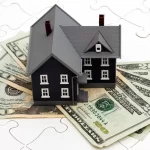6 Different Types of Home Loans: Which One Is Right for You?
By Jamie Wiebe
f you’re a first-time home buyer shopping for a home, odds are you should be shopping for mortgage loans as well—and these days, it’s by no means a one-mortgage-fits-all model. You’ll want to get and understanding of all the basics, with mortgage 101.
Where you live, how long you plan to stay put, and other variables can make certain mortgage loans better suited to a home buyer’s circumstances and loan amount. Choosing wisely between them could save you a bundle on your down payment, fees, and interest.
Many types of house loans exist: conventional loans, FHA loans, VA loans, fixed-rate loans, adjustable-rate mortgages, jumbo loans, and more. Each mortgage loan may require certain down payments or specify standards for loan amount, mortgage insurance, and interest.
Types of mortgage loans: What to know about types of house loans
To learn about all your home-buying options, check out these common types of mortgage loans and whom they’re suited for, so you can make the right choice. The type of mortgage loan that you choose could affect your monthly payment.
Fixed-rate loan
The most common type of conventional loan, a fixed-rate loan prescribes a single interest rate—and monthly payment—for the life of the loan, which is typically 15 or 30 years. The interest rate remains what it is, or stays fixed, for the life of the loan. Compare fixed-rate vs. adjustable-rate mortgages to see what’s right for you.
Right for: Homeowners who crave predictability and aren’t going anywhere soon may be best suited for this conventional loan. For your mortgage payment, you pay X amount for Y years—and that’s the end for a conventional loan. A fixed-rate loan will require a down payment. The rise and fall of interest rates won’t change the terms of your home loan, so you’ll always know what to expect with your monthly payment. That said, a fixed-rate mortgage is best for people who plan to stay in their home for at least a good chunk of the life of the loan; if you think you’ll move fairly soon, you may want to consider the next option.
Adjustable-rate mortgage
Unlike fixed-rate mortgages, adjustable-rate mortgages (ARM) offer mortgage interest rates typically lower than you’d get with a fixed-rate mortgage for a period of time—such as five or 10 years, rather than the life of a loan. But after that, your interest rates (and monthly payments) will adjust, typically once a year, roughly corresponding to current interest rates. So if interest rates shoot up, so do your monthly payments; if they plummet, you’ll pay less on mortgage payments.
Right for: Home buyers with lower credit scores are best suited for an adjustable-rate mortgage. Since people with poor credit typically can’t get good rates on fixed-rate loans, an adjustable-rate mortgage can nudge those interest rates down enough to put homeownership within easier reach. These home loans are also great for people who plan to move and sell their home before their fixed-rate period is up and their rates start vacillating. However, the monthly payment can fluctuate.
FHA loan
While typical home loans require a down payment of 20% of the purchase price of your home, with a Federal Housing Administration, or FHA loan, you can put down as little as 3.5%. That’s because Federal Housing Administration loans are government-backed.
Right for: Home buyers with meager savings for a down payment are a good fit for an FHA loan. The FHA has several requirements for mortgage loans. First, most loan amounts are limited to $417,000 and don’t provide much flexibility. FHA loans are fixed-rate mortgages, with either 15- or 30-year terms. Buyers of FHA-approved loans are also required to pay mortgage insurance—either upfront or over the life of the loan—which hovers at around 1% of the cost of your loan amount.
VA loan
If you’ve served in the United States military, a Veterans Affairs or VA loan can be an excellent alternative to a conventional loan. If you qualify for a VA loan, you can score a sweet home with no down payment and no mortgage insurance requirements.
Right for: VA loans are for veterans who’ve served 90 days consecutively during wartime, 180 during peacetime, or six years in the reserves. Because the home loans are government-backed, the VA has strict requirements on the type of home buyers can purchase with a VA loan: It must be your primary residence, and it must meet “minimum property requirements” (that is, no fixer-uppers allowed).
USDA loan
Another government-sponsored home loan is the USDA Rural Development loan, which is designed for families in rural areas. The government finances 100% of the home price for USDA-eligible homes—in other words, no down payment necessary—and offers discounted mortgage interest rates to boot.
Right for: Borrowers in rural areas who are struggling financially can access USDA-eligible home loans. These home loans are designed to put homeownership within their grasp, with affordable mortgage payments. The catch? Your debt load cannot exceed your income by more than 41%, and, as with the FHA, you will be required to purchase mortgage insurance.
Bridge loan
Also known as a gap loan or “repeat financing,” a bridge loan is an excellent option if you’re purchasing a home before selling your previous residence. Lenders will wrap your current and new mortgage payments into one; once your home is sold, you pay off that mortgage and refinance.





